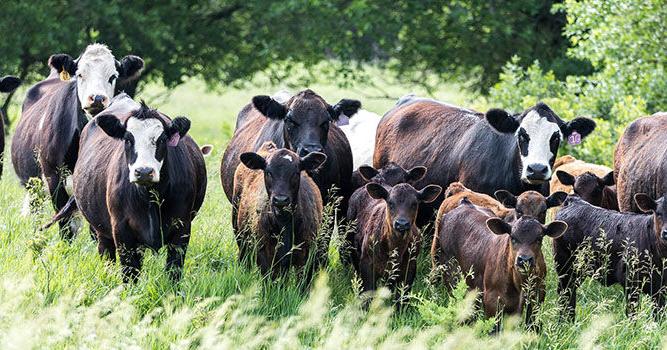Cattle prices are historically high, as we are all aware, but that is also skewing our reference point for normal cattle price dynamics. The first graph in this article shows the average seasonal price index for 700-800 lb steers in the Southern Plains. The graph indicates that the average seasonal pattern between September and March is for feeder steer prices to decline by 6 percent. Average cash prices for 700-800 lb steers in Oklahoma for the week ending September 26 were $381 per cwt. The seasonal pattern shown in the graph implies that, between now and March, Oklahoma price should decline to $359 per cwt if all other factors impacting price were held constant. That is a $22 per cwt drop in the feeder cattle market over the next five months. A small percent of a large number is still a large number.
CME futures prices currently reflect the same seasonal pattern. For the week ending September 26, the March contract was trading at a $13 per cwt discount to the October contract. This has implications for the price floor that can be established through put options or Livestock Risk Protection (LRP).
As of October 1, expected ending values for an LRP policy expiring April 1—relevant for 120-day Nov–Mar stocker cattle programs—are $347 per cwt in Oklahoma for feeder cattle weighing more than 600 pounds. Purchasing LRP with a $337 per cwt coverage level—97 percent of the expected ending value—means indemnities would trigger if the CME Feeder Cattle Index falls below $337, $10 lower than the expected ending value. Producer-paid premiums after subsidy for this policy are $12 per cwt. After accounting for basis in Oklahoma (2023–2025 March average of +$6 per cwt), this would establish an estimated price floor of $343 minus $12. Note the use of a conservative 3-year average basis.
In the current environment, a lot of money is at risk and establishing a price floor is still a useful way to think about managing risk, even if the implied floor seems low compared to the current market—especially if you can find something that would cover cost of gain and current calf prices. LRP premiums are higher because cattle prices are higher. The market is still pricing in normal seasonal patterns for feeder cattle. It just doesn’t seem that way in absolute terms.
(Source: Cattle Market Notes Weekly, University of Arkansas, Division of Agriculture Research & Extension)

